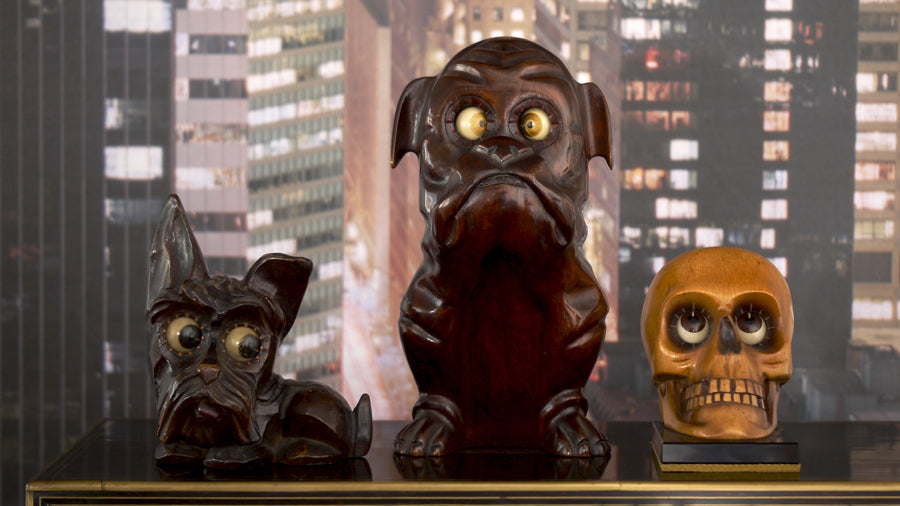Oswald Clocks – A Quirky and Unique Timepiece
I’ve always focused my collection on high-quality, precision watches. For me, what’s most important about a timpiece is its quality, and not whether or not you can wear it. As a result, in addition to collection sports chronographs and tool watches, I’ve ended up collecting marine chronometers and dashboard timers as well.
Perhaps strangely, decorative clocks or watches have never grabbed my attention but I simply can’t resist an Oswald clock – the novelty clocks created by Fritz Oswald in the forms of skulls, dogs, and other figures in which the eyeballs rotate and show the time.
The first time I saw an Oswald clock, it was love at first sight. It was at an antique fair, and I had no idea of what I was buying. But I was absolutely fascinated by the maker’s sense of humour and the quality of the work.
Since then, I have found two more Oswald clocks to add to my collection -- now three in total. For me, owning three is a significant number; psychologically, that milestone number marks the boundary between “I like these things” and “I’m now collecting these things”. I make a very conscious effort to avoid moving from two examples of an object to three for just this reason. So, as much as I love them, I have only two Curta calculators in my collection, two WWII Japanese steel toys and two gorgeous Leica Ms. The moment I have three of something, a lever turns and I start to collect. Three is always the start of even further obsession.
Back to Oswald's... The first Oswald clock I found is still my favorite. It is the Bulldog, carved in wood in a naive style. It reminds me of Hector the Bulldog from the Looney Tunes and Merrie Melodies cartoons, voiced originally by the wonderful June Foray. Sylvester the street cat would often try to capture Tweetie Pie, but Hector would always make sure he never quite managed it.
A few years after I’d found my bulldog, I came across an Oswald Scottish Terrier Dog. These are rather less common than the other models and made from a resin that imitates wood. You could even find one yourself online for less than $300.
My third addition to the collection -- because it was now most certainly a collection -- has been an Oswald skull. These are quite rare, and it took some months to track down. I confess I have something of a fear of skulls, so she stays firmly in the closet. She’d be a perfect -- if slightly macabre -- addition to a doctor's consulting desk.

Most of the clocks were made by the Oswald company in the Freiburg area, in Germany’s Black Forest, from the early 1920s until they finally ceased production in the 1960s.
Before World War II, most rolling-eye clocks, like the Oswalds, were made of wood. Then, as technology advanced in the 1950s and '60s, they began to be made from molded plaster or resins.
The dog-shaped clocks are the most common, with the J. Oswald Company patenting them in 1926. In addition to dogs and skulls, you can also find clocks shaped like genies, owls, and even monkeys. After the J. Oswald Company stopped manufacture, knockoffs appeared as others copied the designs in the 1960s and 1970s, but the classic Oswald clocks are still collector's items.
Technically, the clocks are engineered simply, with the oldest models running basic 8-day movements. The eye on the left side of the clock (as we look at it) shows the hour and the eye on the right displays the minutes, so, depending on the time they can look cute or just completely deranged!

Next time you visit an antiques fair, Osward clocks are well worth looking out for, even if just to see a real curiosity of Black Forest clockmaking.

























